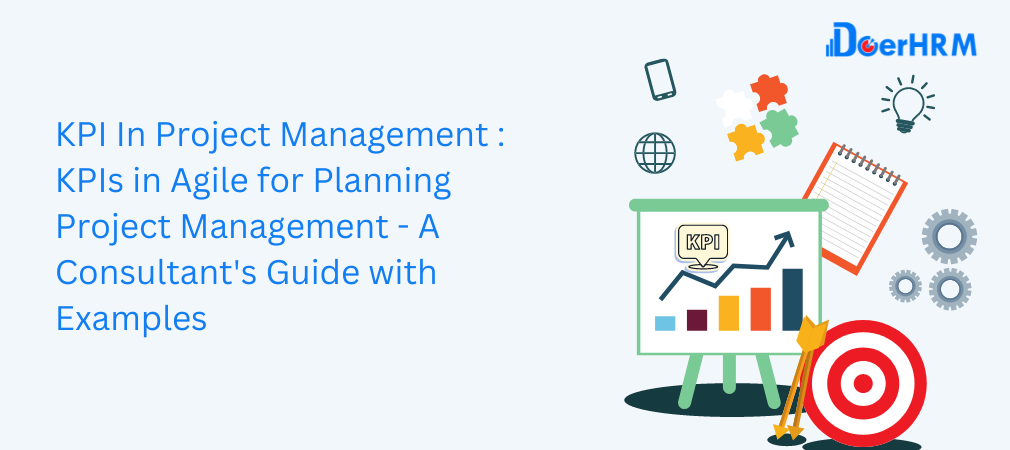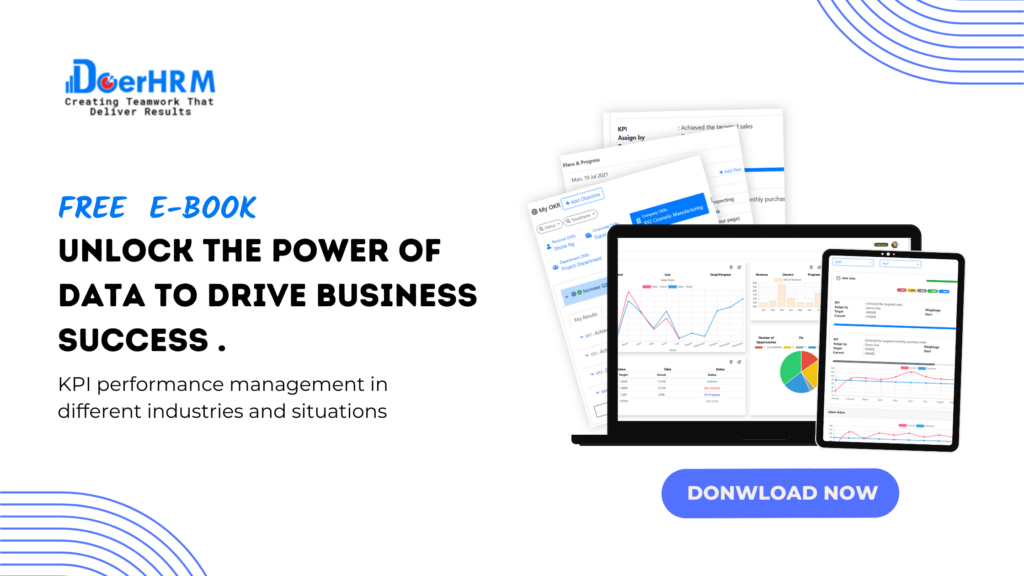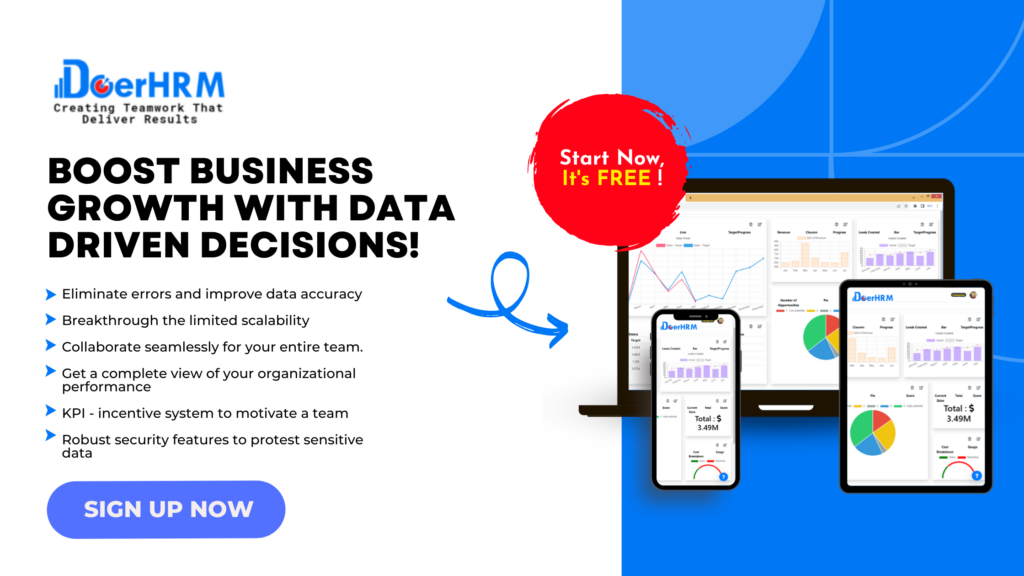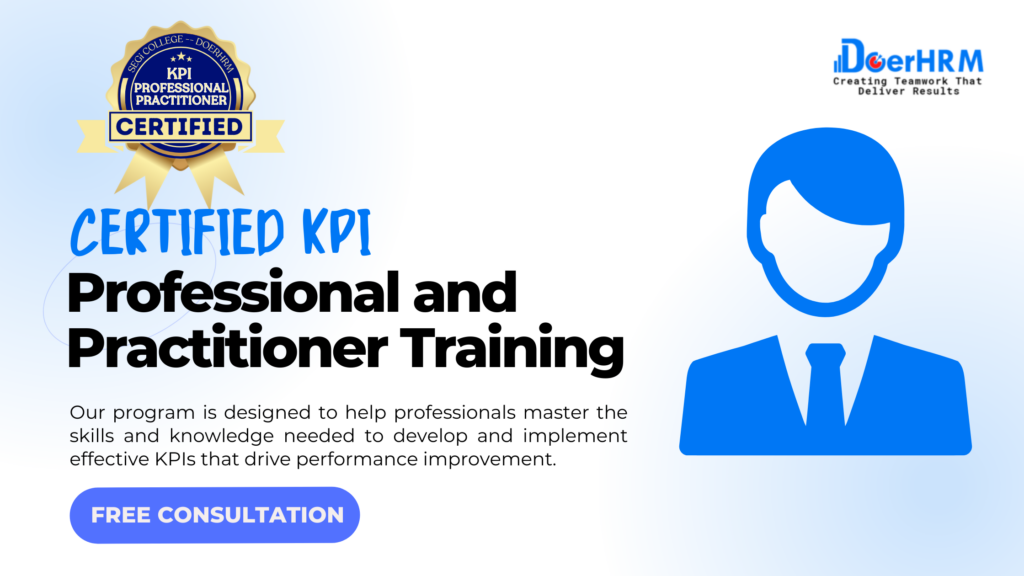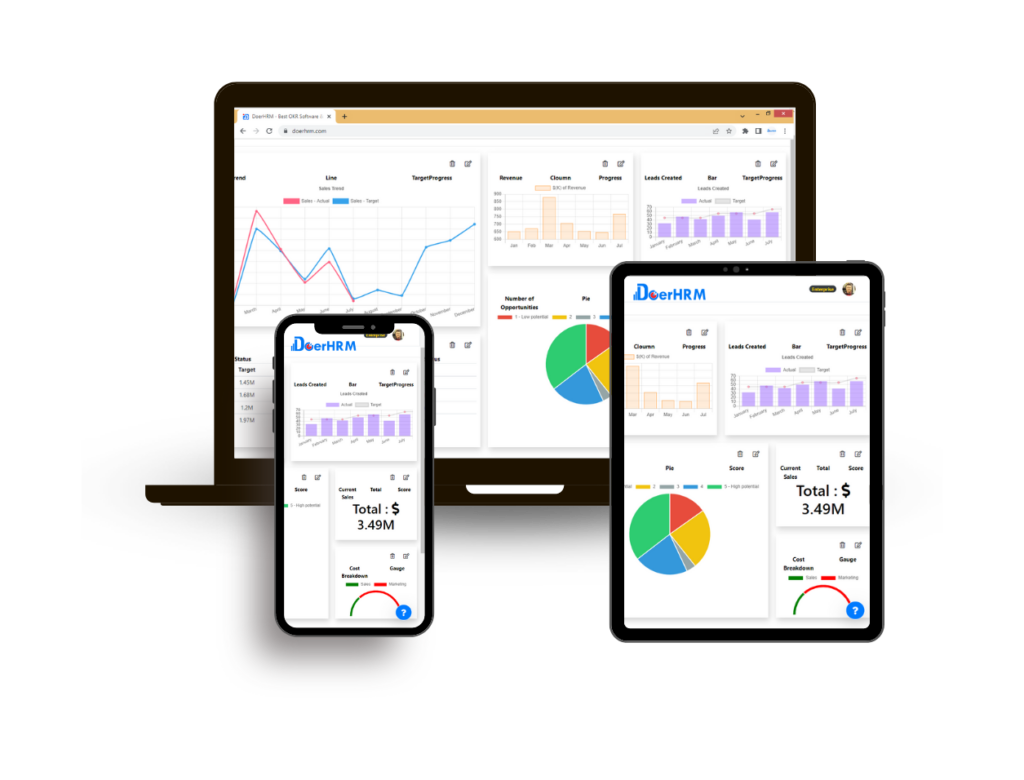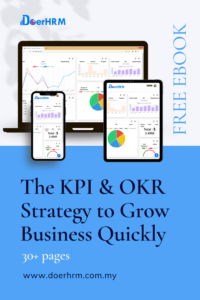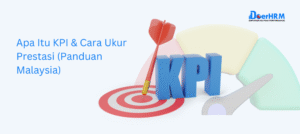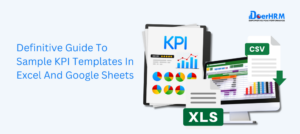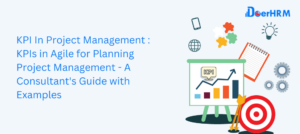KPI In Project Management – In the dynamic world of project management, the ability to measure progress, track performance, and ensure project success is paramount. Key Performance Indicators (KPIs) play a vital role in this process, offering valuable insights into project health and providing a roadmap for achieving objectives. In the context of Agile project management methodologies, KPIs take on even greater significance, as they enable teams to adapt and optimize their approach in an iterative and collaborative environment.
Agile project management is a flexible and customer-centric approach that focuses on delivering value in incremental iterations. It emphasizes continuous improvement and adaptive planning, allowing teams to respond to changing requirements and deliver high-quality outcomes. KPIs serve as critical metrics that gauge progress, measure success, and drive decision-making in Agile project management.
The purpose of this article is to provide a comprehensive guide to KPIs in Agile project management, empowering project managers and teams with the knowledge and tools they need to effectively plan, track, and manage their projects. Through practical examples, we will delve into the different aspects of Agile project management where KPIs play a crucial role, enabling teams to achieve project goals and maximize value delivery.
By understanding the significance of KPIs in Agile project management and learning how to apply them in practice, project managers and teams can enhance their ability to make data-driven decisions, foster collaboration, and continuously improve project outcomes. Whether you are new to Agile or seeking to refine your project management approach, this guide will equip you with the insights and examples you need to leverage KPIs successfully in Agile project management. Let’s explore the world of KPIs in Agile and discover how they can transform your project management endeavors.
Table of Contents
Definition and Significance of KPIs
Define KPIs in project management as measurable metrics used to track project
In the realm of project management , Key Performance Indicators (KPIs) are measurable metrics that serve as vital tools for tracking project performance and assessing progress towards specific goals and objectives. These metrics are carefully chosen to align with the project’s strategic objectives and provide valuable insights into its overall health and success.
KPIs act as quantifiable indicators of performance, allowing project managers to objectively evaluate various aspects of the project. They enable the measurement of key factors such as time, cost, quality, scope, customer satisfaction, and more. By defining and tracking KPIs, project managers gain a clear understanding of whether the project is on track, identify areas of improvement, and make informed decisions to ensure project success.
The significance of KPIs in project management lies in their ability to provide actionable data that drives effective decision-making. They serve as a compass, guiding project teams towards achieving desired outcomes and delivering value to stakeholders. KPIs act as a common language, enabling clear communication and alignment among team members, stakeholders, and project sponsors.
By tracking KPIs, project managers can identify early warning signs of potential issues or risks, allowing them to take timely corrective actions. KPIs also help in identifying and capitalizing on project strengths and success factors, fostering continuous improvement throughout the project lifecycle.
Moreover, KPIs provide a foundation for objective evaluation and performance measurement. They enable project managers to assess the efficiency and effectiveness of processes, resource utilization, and overall project performance. With this data-driven approach, project managers can identify bottlenecks, allocate resources strategically, and optimize project outcomes.
Overall, KPIs play a pivotal role in project management by providing a framework for measuring progress, aligning efforts, facilitating decision-making, and ensuring the successful delivery of projects. They empower project managers and teams with actionable insights, enabling them to navigate the complexities of project management and drive meaningful results.
Related Article : What is a Key Performance Indicator (KPI)? Meaning, Templates, Examples
How KPIs provide valuable insights into the effectiveness and efficiency of project management processes.
KPI in project management are not just metrics to measure project performance; they also provide valuable insights into the effectiveness and efficiency of project management processes. Here’s how KPIs offer these valuable insights:
Performance Evaluation: KPIs act as benchmarks to evaluate the performance of various project elements. By setting specific KPIs, project managers can assess how well the project is meeting its objectives and targets. For example, KPIs related to project timelines can reveal if milestones are being achieved within the planned schedule. By tracking KPIs, project managers gain visibility into the project’s performance and can identify areas that require improvement.
Process Efficiency: KPIs help project managers gauge the efficiency of project management processes. For instance, KPIs related to resource utilization can highlight inefficiencies or bottlenecks in resource allocation, enabling project managers to optimize resource utilization and improve overall project efficiency. KPIs related to cost management can provide insights into cost overruns or inefficiencies in spending, prompting corrective actions to bring the project back on track.
Identification of Risks and Issues: KPIs act as early warning indicators, allowing project managers to identify potential risks and issues before they escalate. For example, KPIs related to quality management can help detect an increase in defects or customer complaints, prompting project managers to investigate and address underlying issues. By tracking KPIs, project managers can take proactive measures to mitigate risks and ensure project success.
Continuous Improvement: KPIs play a vital role in driving continuous improvement in project management processes. By monitoring and analyzing KPI data, project managers can identify trends, patterns, and areas for improvement. For example, KPIs related to stakeholder satisfaction can highlight areas where customer expectations are not being met, prompting project managers to implement corrective measures. KPIs enable project managers to adopt a data-driven approach to identify opportunities for enhancing processes and achieving better project outcomes.
Decision-making: KPIs provide project managers with objective data to make informed decisions. By having access to KPIs, project managers can assess the impact of their decisions on project performance. For instance, KPIs related to scope management can help project managers evaluate the consequences of scope changes and make decisions accordingly. KPIs act as a compass for decision-making, guiding project managers towards the most effective course of action.
In summary, KPIs offer valuable insights into the effectiveness and efficiency of project management processes by providing performance evaluation, highlighting process inefficiencies, identifying risks and issues, driving continuous improvement, and facilitating data-driven decision-making. By leveraging KPIs, project managers can enhance project performance, optimize processes, and ensure successful project delivery.
Related article : Top 20 HR KPI Metrics & Examples For Human Resource Manager, Executive, Department – HRMS
Benefits of KPIs in Agile Project Management
How Agile methodologies rely on iterative and incremental approaches.
Agile methodologies are known for their iterative and incremental approaches to project management.(KPI In Project Management) These methodologies, such as Scrum or Kanban, focus on breaking down the project into smaller, manageable units of work and delivering value in short iterations. Here’s how KPIs provide significant benefits in Agile project management:
Progress Tracking and Transparency: KPIs in Agile project management enable teams to track progress effectively. By defining KPIs at the sprint or iteration level, teams can measure the completion of specific tasks, user stories, or features within a given time frame. This allows for greater transparency as everyone involved in the project can visualize and understand the progress being made. KPIs provide a clear and quantifiable way to assess how much work has been completed and how close the team is to achieving the project’s goals.
Adaptability and Flexibility: Agile methodologies embrace change and adaptability as core principles. KPIs play a crucial role in enabling teams to respond to change effectively. By tracking KPIs, project managers can assess the impact of changes on project performance and make informed decisions on adjusting priorities, scope, or resources. KPIs provide a means to measure the effects of changes and evaluate their alignment with project objectives. This flexibility ensures that Agile teams can adapt their plans and deliver value continuously.
Continuous Improvement: KPIs in Agile project management foster a culture of continuous improvement. By monitoring KPIs, teams can identify areas for improvement and take corrective actions. For example, KPIs related to sprint velocity or cycle time can highlight bottlenecks or inefficiencies in the development process. Teams can then collaborate to address these issues, experiment with process changes, and measure the impact of those changes through KPIs. This iterative approach to improvement enables teams to refine their processes, optimize productivity, and enhance overall project performance.
Customer Satisfaction and Value Delivery: Agile methodologies prioritize customer satisfaction and value delivery. KPIs play a vital role in ensuring that teams are meeting customer expectations and delivering value incrementally. KPIs related to customer satisfaction, such as Net Promoter Score (NPS) or customer feedback metrics, provide insights into how well the project is meeting customer needs. By continuously tracking and analyzing these KPIs, teams can make data-driven decisions to enhance the product or service being developed and maximize customer satisfaction.
Team Collaboration and Alignment: KPIs promote collaboration and alignment within Agile teams. By establishing common KPIs, team members have a shared understanding of project goals and can align their efforts accordingly. KPIs serve as a means to communicate progress, achievements, and challenges, fostering open communication and collaboration among team members. This transparency and alignment enable teams to work together towards shared objectives, ensuring that everyone is working towards the same KPIs and project outcomes.
Related article: Top 11 Important Training KPIs HR Managers Should Have
The Need for KPIs in Agile - KPIs In Project Management
In Agile project management, the need for Key Performance Indicators (KPIs) becomes even more pronounced due to the iterative and adaptive nature of the methodology. KPIs play a crucial role in assessing project health, identifying bottlenecks, and making data-driven decisions. Here’s a detailed explanation of their importance in Agile:
Assessing Project Health: KPIs provide objective measures to assess the health and progress of Agile projects. They allow project managers and teams to evaluate whether they are on track to meet their goals. By defining and tracking KPIs, such as sprint burndown charts or velocity metrics, teams can monitor the pace of work, identify potential delays, and take proactive measures to address them. KPIs act as indicators of project health, helping teams understand if they are achieving the desired outcomes within the expected timeframes.
Identifying Bottlenecks and Areas for Improvement: KPIs enable Agile teams to identify bottlenecks and areas for improvement in their processes. By tracking KPIs related to cycle time, lead time, or throughput, teams can pinpoint stages or activities that are causing delays or hindering progress. These KPIs highlight process inefficiencies and provide valuable insights into where improvements can be made. By analyzing KPI data, teams can collaborate to implement changes, experiment with process adjustments, and measure the impact on project performance. This iterative approach to improvement ensures that Agile teams continually refine their processes and optimize their workflow.
Making Data-Driven Decisions: Data-driven decision-making is a cornerstone of Agile project management, and KPIs serve as the foundation for these decisions. By collecting and analyzing KPI data, project managers and teams gain valuable insights into project performance, trends, and potential risks. For instance, KPIs related to customer satisfaction or stakeholder feedback provide quantifiable data on the quality and acceptance of deliverables. This information allows teams to make informed decisions regarding scope changes, prioritization, resource allocation, and other crucial aspects of project management. Data-driven decision-making reduces reliance on assumptions and intuition, enabling teams to base their choices on objective measures.
Tracking Value Delivery: Agile methodologies prioritize delivering value to customers in incremental increments. KPIs help Agile teams track the value being delivered throughout the project. By setting KPIs related to customer satisfaction, product usage metrics, or business impact, teams can assess the effectiveness of their deliverables in meeting customer needs and driving desired outcomes. These KPIs provide evidence of value delivery and guide teams in adjusting their approach to maximize value creation.
Facilitating Continuous Improvement: KPIs in Agile project management facilitate a culture of continuous improvement. By regularly monitoring and analyzing KPIs, teams can identify patterns, trends, and areas for enhancement. For example, KPIs related to team productivity or defect rates can uncover opportunities to optimize processes or invest in training and skill development. Continuous improvement based on KPI insights allows Agile teams to adapt, learn, and evolve, ensuring they deliver increasingly better outcomes over time.
Related article : Why KPIs Are Important: 10 Reason Key Performance Indicators Stands For? -Meaning, Examples ,Template
Types of KPIs in Project Management
Explore various categories of KPIs used in project management
KPI in project management can be categorized into different types, each focusing on specific aspects of the project. By understanding these categories, project managers can select the most relevant KPIs for their projects. Here are the key types of KPIs used in project management:
- Time-Based KPIs: Time-based KPIs focus on monitoring and evaluating project timelines and deadlines. They provide insights into project schedule adherence and efficiency. Examples of time-based KPIs include:
- Project Duration: Measures the overall time taken to complete the project.
- Schedule Variance: Compares planned project timelines with actual progress.
- Milestone Achievement: Tracks the completion of significant project milestones within specified timeframes.
These KPIs enable project managers to assess time-related performance, identify potential delays, and take corrective actions to ensure timely project delivery.
- Quality-Based KPIs: Quality-based KPIs measure the adherence to defined quality standards and customer expectations. They assess the effectiveness and reliability of project deliverables. Examples of quality-based KPIs include:
- Defect Rate: Measures the number of defects or errors in project deliverables.
- Customer Satisfaction: Evaluates customer feedback and satisfaction levels.
- Compliance with Standards: Assesses the project’s adherence to industry or regulatory standards.
These KPIs help project managers ensure that project outcomes meet quality requirements and delight stakeholders.
- Cost-Based KPIs: Cost-based KPIs focus on monitoring and controlling project expenses and budgets. They help project managers ensure financial discipline and optimize resource utilization. Examples of cost-based KPIs include:
- Cost Variance: Compares planned project costs with actual expenditures.
- Return on Investment (ROI): Measures the financial returns generated by the project.
- Budget Compliance: Assesses the project’s adherence to allocated budgets.
These KPIs enable project managers to manage costs effectively, control project budgets, and maximize financial performance.
- Scope-Based KPIs: Scope-based KPIs track and evaluate the extent to which project deliverables align with the defined project scope. They ensure that project teams meet stakeholder requirements and objectives. Examples of scope-based KPIs include:
- Scope Creep: Measures the frequency and impact of changes to the project scope.
- Requirements Coverage: Evaluates the completeness and coverage of project requirements.
- Deliverable Completeness: Assesses the degree to which project deliverables meet the defined scope.
These KPIs help project managers manage scope changes, minimize project creep, and maintain alignment with stakeholder expectations.
- Stakeholder-Based KPIs: Stakeholder-based KPIs focus on measuring and enhancing stakeholder engagement, satisfaction, and collaboration. They assess the project’s ability to meet stakeholder needs and build positive relationships. Examples of stakeholder-based KPIs include:
- Stakeholder Satisfaction: Measures the satisfaction levels of project stakeholders.
- Communication Effectiveness: Evaluates the clarity and effectiveness of project communication.
- Stakeholder Engagement: Assesses the level of involvement and collaboration of stakeholders.
These KPIs enable project managers to prioritize stakeholder needs, address concerns, and foster positive relationships throughout the project lifecycle.
By leveraging these different types of KPIs, project managers can comprehensively monitor project performance, address potential issues, and drive success across various dimensions of the project. It is essential to select a balanced mix of KPIs that align with project objectives and provide a holistic view of project health.
Diversity of KPIs and their specific relevance to different aspects of project management.
KPI in project management exhibit diversity in their measurement focus and relevance to different aspects of project management. Understanding the specific relevance of each type of KPI is crucial for effective project monitoring and decision-making. Let’s delve into the details of their diversity and relevance:
Time-Based KPIs: Time-based KPIs are essential for monitoring project schedules and ensuring timely completion. They provide insights into project progress and help identify potential bottlenecks. For example, tracking milestone achievements allows project managers to assess if the project is on track and if adjustments are necessary. Time-based KPIs enable project managers to proactively manage project timelines, allocate resources efficiently, and make timely decisions to keep the project on schedule.
Quality-Based KPIs: Quality-based KPIs are vital for evaluating the level of excellence in project deliverables. They focus on meeting defined quality standards, customer expectations, and regulatory requirements. Monitoring defect rates and customer satisfaction levels helps project managers assess the effectiveness and reliability of project outcomes. Quality-based KPIs enable project managers to identify areas for improvement, implement corrective actions, and deliver high-quality results that meet or exceed stakeholder expectations.
Cost-Based KPIs: Cost-based KPIs provide insights into project expenditures and financial performance. They help project managers control project budgets, monitor cost variations, and optimize resource allocation. By tracking cost variances and adhering to allocated budgets, project managers can identify cost-saving opportunities, make informed decisions to optimize spending, and ensure the project’s financial success. Cost-based KPIs contribute to effective financial management and resource utilization.
Scope-Based KPIs: Scope-based KPIs are crucial for managing and controlling the project’s scope. They measure the alignment of project deliverables with defined requirements and scope boundaries. Monitoring scope creep, requirements coverage, and deliverable completeness helps project managers keep the project on track and prevent scope-related issues. Scope-based KPIs facilitate effective scope management, enabling project managers to make decisions regarding scope changes, prioritize requirements, and ensure that project outcomes align with stakeholder needs.
Stakeholder-Based KPIs: Stakeholder-based KPIs focus on evaluating stakeholder engagement, satisfaction, and communication effectiveness. They provide insights into stakeholder perceptions, needs, and collaboration levels. Measuring stakeholder satisfaction and engagement helps project managers understand the project’s impact on stakeholders and identify areas where communication or collaboration can be improved. Stakeholder-based KPIs foster positive stakeholder relationships, facilitate effective communication, and enhance stakeholder involvement in project decision-making.
The diversity of KPIs reflects the multifaceted nature of project management. Each type of KPI offers specific relevance to different aspects of project management, such as timelines, quality, costs, scope, and stakeholder relationships. By leveraging a comprehensive set of KPIs, project managers gain a holistic view of project performance, allowing them to make informed decisions, mitigate risks, and drive successful project outcomes.
It is important for project managers to carefully select and prioritize the relevant KPIs based on the project’s objectives, stakeholder expectations, and specific management needs. By using a balanced mix of KPIs from different categories, project managers can effectively monitor and manage projects, ensuring success across multiple dimensions of project management.
Setting SMART KPIs - KPIs In Project Management
To ensure the effectiveness and usefulness of Key Performance Indicators (KPIs) in Agile project management, it is essential to set SMART KPIs (KPI In Project Management). The SMART criteria provide a framework for defining KPIs that are specific, measurable, achievable, relevant, and time-bound. Let’s explore each element of the SMART criteria in detail:
Specific: KPIs should be specific and clearly defined. They should focus on specific project objectives, areas of improvement, or desired outcomes. By being specific, KPIs provide a clear direction and purpose, guiding teams towards specific targets. For example, instead of setting a vague KPI like “improve customer satisfaction,” a specific KPI would be “increase customer satisfaction rating by 10% within the next quarter.” Specific KPIs enhance clarity, alignment, and accountability within the Agile team.
Measurable: KPIs should be measurable to enable objective tracking and evaluation of progress. They should have quantifiable metrics or indicators that can be measured over time. Measurable KPIs provide tangible data points that help teams understand their performance and make informed decisions. For example, a measurable KPI could be “reduce average response time to customer inquiries to less than 24 hours.” Measurable KPIs facilitate data-driven analysis, monitoring, and comparison against targets.
Achievable: KPIs should be achievable and realistic within the given project constraints. They should set targets that are challenging yet attainable. Unrealistic or overly ambitious KPIs can demotivate teams and hinder progress. By setting achievable KPIs, project managers encourage team engagement, foster a sense of accomplishment, and drive continuous improvement. It is important to consider available resources, capabilities, and project timelines when defining achievable KPIs.
Relevant: KPIs should be relevant to the project goals and aligned with the overall project vision. They should directly contribute to the success and value delivery of the project. Relevant KPIs ensure that teams focus on metrics that have a significant impact on project outcomes. For example, in an Agile software development project, relevant KPIs may include customer adoption rates, product usability scores, or feature delivery velocity. Relevant KPIs keep teams aligned with the project’s strategic objectives and customer expectations.
Time-bound: KPIs should be time-bound, meaning they have a defined timeframe or deadline for achievement. Time-bound KPIs create a sense of urgency, provide a timeline for tracking progress, and facilitate timely decision-making. Setting specific timeframes helps teams stay accountable and enables project managers to monitor performance against deadlines. For example, a time-bound KPI could be “reduce the average lead time for user story completion by 20% within the next two sprints.” Time-bound KPIs promote focus, drive, and a sense of urgency within Agile teams.
By applying the SMART criteria, project managers can ensure that KPIs in Agile project management are well-defined, meaningful, and aligned with project objectives. SMART KPIs enhance clarity, measurability, achievability, relevance, and time-bound nature, leading to effective project monitoring, decision-making, and performance improvement. When setting SMART KPIs, it is crucial to involve stakeholders, consider project-specific factors, and regularly review and update KPIs as the project progresses.
Related article : SMART KPI : What Is Smart KPIs And How To Use It In Business – Meaning , Examples, Dashboard And Template
Importance of aligning KPIs with project objectives and team goals.
Aligning KPIs with project objectives and team goals is of paramount importance in Agile project management. When KPIs are closely aligned with the overall project objectives and the goals of the Agile team, they become powerful tools for driving progress and success. Here’s a closer look at the importance of this alignment:(KPI In Project Management)
Clear Direction and Focus: Aligning KPIs with project objectives provides a clear direction and focus for the Agile team. KPIs act as guideposts that help team members understand what needs to be achieved and how their efforts contribute to the project’s overall success. When KPIs are aligned, team members can prioritize their tasks, make informed decisions, and allocate their time and resources effectively. This alignment ensures that everyone is working towards common goals and minimizes the risk of diverging efforts.
Measurable Progress Tracking: When KPIs are aligned with project objectives, they facilitate measurable progress tracking. By defining specific metrics and targets that align with the project’s desired outcomes, project managers can monitor and measure the team’s progress. This tracking provides valuable insights into how well the team is performing and whether they are on track to achieve the desired results. Regular monitoring of aligned KPIs enables early identification of issues or bottlenecks, allowing for timely interventions and adjustments to keep the project on course.
Motivation and Accountability: Aligning KPIs with team goals enhances motivation and accountability among team members. When KPIs reflect the objectives that are meaningful to the team, they create a sense of purpose and ownership. Team members are more likely to be engaged and motivated to achieve the defined KPIs when they understand the direct correlation between their work and the desired outcomes. Moreover, aligning KPIs with team goals promotes accountability, as team members are responsible for their contributions towards achieving the defined targets.
Continuous Improvement: Aligned KPIs foster a culture of continuous improvement within the Agile team. By regularly reviewing and analyzing the progress against the defined KPIs, teams can identify areas for improvement and implement necessary changes. When KPIs are aligned with project objectives, they provide valuable feedback on the effectiveness of processes, methodologies, and strategies employed. This feedback allows teams to refine their approaches, experiment with new ideas, and continuously enhance their performance.
Stakeholder Satisfaction: Aligning KPIs with project objectives helps ensure stakeholder satisfaction. When KPIs are closely tied to the desired outcomes and deliverables that are important to stakeholders, it increases the likelihood of meeting their expectations. This alignment helps build trust and confidence among stakeholders, as they can see a direct correlation between the defined KPIs and the value delivered by the project. When stakeholders are satisfied, it enhances collaboration, support, and overall project success.
In summary, aligning KPIs with project objectives and team goals is vital for successful Agile project management. It provides clarity, focus, and a sense of purpose for the team, facilitates measurable progress tracking, enhances motivation and accountability, promotes continuous improvement, and contributes to stakeholder satisfaction. By aligning KPIs, project managers can harness the full potential of KPIs as effective tools for driving progress, achieving project success, and delivering value to stakeholders.
Examples of KPIs in Agile Project Management
Examples that demonstrate the application of KPIs in Agile project management.
KPIs play a vital role in Agile project management by providing measurable indicators of progress, performance, and success. Here are some examples of KPIs commonly used in Agile projects, along with their specific applications:
Sprint Velocity: Sprint velocity measures the amount of work completed by the Agile team in each sprint. It is calculated by summing up the story points or task points completed during a sprint. Sprint velocity provides insights into the team’s productivity and helps in estimating future sprints and project timelines. By tracking sprint velocity, project managers can identify any variations or trends in team performance, enabling them to make data-driven decisions and adjust resources or priorities accordingly.
Cycle Time: Cycle time measures the time taken for a user story or task to move through the entire Agile workflow, from initiation to completion. It indicates the efficiency of the team’s workflow and highlights any bottlenecks or delays in the process. Monitoring cycle time allows project managers to identify areas for process improvement, optimize resource allocation, and reduce lead times. Decreasing cycle time is often a key objective in Agile projects to enhance speed and responsiveness.
Burn-down Chart: A burn-down chart visually represents the remaining work versus time during a sprint or project. It shows the progress of completing user stories or tasks over time. The chart provides a clear visual representation of whether the team is on track to complete all planned work within the specified time. By analyzing the burn-down chart, project managers can identify any deviations or risks, adjust workloads, and take necessary actions to ensure timely project completion.
Customer Satisfaction Rating: Customer satisfaction rating measures the level of satisfaction or feedback from project stakeholders, customers, or end-users. It can be collected through surveys, feedback forms, or direct interactions. Tracking customer satisfaction helps in evaluating the success of the project in meeting customer expectations and delivering value. By monitoring and improving customer satisfaction, Agile teams can enhance customer loyalty, strengthen relationships, and drive continuous improvement.
Defect Density: Defect density measures the number of defects identified in a deliverable per unit of measurement, such as lines of code or user stories. It provides insights into the quality of the deliverables and the effectiveness of the team’s testing and quality assurance processes. By monitoring defect density, project managers can identify areas for improvement, allocate resources for defect resolution, and ensure the delivery of high-quality products or services.
Team Happiness Index: The team happiness index assesses the satisfaction, engagement, and well-being of Agile team members. It can be measured through surveys or regular feedback sessions. Tracking team happiness helps project managers identify any team morale issues, address concerns, and foster a positive and collaborative work environment. A high team happiness index indicates a motivated and productive team, which can lead to improved project outcomes.
Lead Time: Lead time measures the elapsed time from the initiation of a user story or task to its delivery. It captures the overall time taken for a feature or deliverable to be completed. Monitoring lead time helps project managers understand the efficiency of the team’s development processes, identify areas of improvement, and optimize resource allocation. Decreasing lead time enhances agility, responsiveness, and time-to-market for Agile projects.
Stakeholder Engagement Level: Stakeholder engagement level assesses the active involvement and collaboration of project stakeholders throughout the project lifecycle. It measures factors such as participation in meetings, responsiveness to queries, and contribution to decision-making. Monitoring stakeholder engagement helps project managers ensure effective communication, manage expectations, and build strong relationships with stakeholders. High stakeholder engagement contributes to project success and stakeholder satisfaction.
Specific KPIs
KPIs in Agile project management provide measurable indicators of progress, performance, and success. Here are some specific examples of commonly used KPIs and their applications (KPI In Project Management) :
Sprint Velocity: Sprint velocity is a key KPI in Agile projects that measures the amount of work completed by the Agile team in each sprint. It is usually measured in story points or task points. Sprint velocity provides insights into the team’s productivity and helps in estimating future sprints and project timelines. By tracking sprint velocity, project managers can identify any variations or trends in team performance, enabling them to make data-driven decisions and adjust resources or priorities accordingly. A consistent and predictable sprint velocity indicates a well-performing team.
Lead Time: Lead time is another important KPI that measures the elapsed time from the initiation of a user story or task to its delivery. It captures the overall time taken for a feature or deliverable to be completed. Monitoring lead time helps project managers understand the efficiency of the team’s development processes, identify areas of improvement, and optimize resource allocation. Decreasing lead time enhances agility, responsiveness, and time-to-market for Agile projects. By reducing lead time, teams can deliver value faster and increase customer satisfaction.
Customer Satisfaction Score (CSAT): CSAT is a KPI that measures the satisfaction of customers or end-users with the delivered product or service. It is typically measured through surveys, feedback forms, or direct interactions. CSAT provides valuable insights into the success of the project in meeting customer expectations and delivering value. By monitoring and improving CSAT, Agile teams can enhance customer loyalty, strengthen relationships, and drive continuous improvement. A high CSAT score indicates that the project is meeting or exceeding customer expectations.
Burn-Down Chart: A burn-down chart is a visual representation of the remaining work versus time during a sprint or project. It shows the progress of completing user stories or tasks over time. The chart provides a clear visual representation of whether the team is on track to complete all planned work within the specified time. By analyzing the burn-down chart, project managers can identify any deviations or risks, adjust workloads, and take necessary actions to ensure timely project completion. It allows teams to make data-driven decisions and maintain a steady pace of work throughout the project.
Defect Density: Defect density is a KPI that measures the number of defects identified in a deliverable per unit of measurement, such as lines of code or user stories. It provides insights into the quality of the deliverables and the effectiveness of the team’s testing and quality assurance processes. By monitoring defect density, project managers can identify areas for improvement, allocate resources for defect resolution, and ensure the delivery of high-quality products or services. A low defect density indicates a high level of quality and customer satisfaction.
These examples highlight the application of specific KPIs in Agile project management. Sprint velocity and lead time help monitor team performance and project timelines. CSAT measures customer satisfaction, while the burn-down chart provides visibility into progress and project completion. Defect density focuses on the quality of deliverables. By tracking these KPIs, project managers can gain valuable insights, make informed decisions, and continuously improve project outcomes in Agile environments.
How it contributes to measuring project performance and planning - KPIs In Project Management
Sprint Velocity: Sprint velocity is a crucial KPI in Agile project management as it measures the amount of work completed by the team in each sprint. It provides a quantitative measure of the team’s productivity and efficiency. By tracking sprint velocity over time, project managers can gain insights into the team’s performance trends, their capacity for delivering work, and their ability to meet project deadlines. It helps in estimating future sprints and project timelines, allowing for better planning and resource allocation. Sprint velocity also aids in identifying any variations or issues in the team’s productivity, enabling prompt corrective actions to keep the project on track.
Lead Time: Lead time is an essential KPI for measuring the efficiency and responsiveness of Agile project management processes. It measures the elapsed time from the initiation of a user story or task to its delivery. By tracking lead time, project managers can identify bottlenecks, delays, or inefficiencies in the workflow. It helps in optimizing the team’s development processes, resource allocation, and task prioritization. Decreasing lead time enables faster delivery of value to customers and stakeholders, contributing to higher satisfaction levels. Moreover, lead time provides valuable insights for project planning and forecasting, allowing teams to set realistic expectations and make informed decisions.
Customer Satisfaction Score (CSAT): CSAT is a vital KPI that directly measures customer satisfaction and the success of Agile projects in meeting customer expectations. It is usually obtained through surveys, feedback forms, or direct interactions with customers or end-users. CSAT provides qualitative feedback on the delivered product or service, allowing project managers to assess customer satisfaction levels. By tracking CSAT, project teams can identify areas for improvement, address customer concerns, and make necessary adjustments to enhance the overall customer experience. High CSAT scores indicate project success and can contribute to increased customer loyalty, positive word-of-mouth, and future business opportunities.
Burn-Down Chart: The burn-down chart is a visual representation of the remaining work versus time in an Agile project. It provides a clear indication of the progress made and the work remaining to be completed. By tracking the burn-down chart, project managers can assess the team’s pace of work, identify any deviations from the planned trajectory, and make informed decisions about resource allocation or task reprioritization. The burn-down chart helps in effective project planning, as it provides visibility into project completion timelines and allows for early identification of potential risks or delays. It also fosters transparency and collaboration within the team and with stakeholders by providing a shared understanding of project progress.
Defect Density: Defect density is a quality-focused KPI that measures the number of defects identified in a deliverable per unit of measurement, such as lines of code or user stories. It highlights the effectiveness of the team’s testing and quality assurance processes. By tracking defect density, project managers can assess the overall quality of the deliverables and identify areas for improvement in the development or testing processes. Lower defect density indicates higher quality and reduces the risk of post-release issues. It contributes to better project planning by providing insights into the effort and resources required for testing and bug fixing, thereby ensuring a smoother delivery process and improved customer satisfaction.
These examples demonstrate the relevance of each KPI in measuring project performance and planning in Agile project management. They provide valuable insights into team productivity, efficiency, responsiveness, customer satisfaction, progress, and quality. By monitoring and analyzing these KPIs, project managers can make informed decisions, identify areas for improvement, optimize resource allocation, and ensure successful project outcomes in Agile environments.
Monitoring and Reporting KPIs - KPIs In Project Management
Significance of real-time monitoring and regular reporting of KPIs in Agile project management.
Real-time monitoring and regular reporting of KPIs are critical aspects of effective Agile project management. Here’s an explanation of their significance:
Timely Decision-Making: Real-time monitoring of KPIs allows project managers to have up-to-date information about the project’s progress, performance, and health. It enables them to make timely and informed decisions to address any issues or risks that may arise. By continuously tracking KPIs, project managers can identify bottlenecks, deviations, or potential delays and take immediate action to mitigate them. Real-time monitoring ensures that project teams stay on track, maintain productivity, and deliver value within the specified time frames.
Agile Adaptability: Agile methodologies embrace adaptability and flexibility in project management. Regular monitoring of KPIs enables project managers to assess the effectiveness of Agile practices, identify areas for improvement, and make necessary adjustments. It allows teams to respond quickly to changing requirements, customer feedback, or market dynamics. Real-time monitoring ensures that Agile projects remain aligned with evolving business needs and helps teams stay agile in their decision-making and problem-solving approaches.
Continuous Improvement: Regular reporting of KPIs in Agile project management promotes a culture of continuous improvement. By analyzing and reviewing KPIs on a regular basis, project teams can identify patterns, trends, and areas where performance can be enhanced. Reporting KPIs to stakeholders and team members provides transparency and fosters collaboration. It enables meaningful discussions, sharing of insights, and collective problem-solving. Regular reporting of KPIs encourages a data-driven approach to decision-making, empowers teams to make adjustments, and promotes continuous learning and growth.
Stakeholder Engagement and Communication: Monitoring and reporting KPIs also facilitate effective communication and engagement with project stakeholders. By sharing progress, performance, and success metrics, project managers can keep stakeholders informed about project status, achievements, and challenges. It builds trust, demonstrates transparency, and aligns expectations. Stakeholders can actively participate in discussions, provide valuable input, and make informed decisions based on the KPI data. Regular reporting of KPIs helps in building strong relationships with stakeholders, ensuring their buy-in and support throughout the project lifecycle.
Early Risk Identification and Mitigation: Real-time monitoring of KPIs enables project managers to identify potential risks and issues at an early stage. By regularly reviewing KPIs, they can spot deviations from expected performance, such as a decline in sprint velocity or an increase in defect density. This early identification allows project managers to take proactive measures to mitigate risks, such as adjusting resource allocation, revising priorities, or implementing process improvements. Monitoring KPIs helps in maintaining project stability, reducing the likelihood of major setbacks, and ensuring successful project outcomes.
Uses of project management tools and dashboards to track and visualize Metrics - KPIs In Project Management
In Agile project management, project management tools and dashboards play a significant role in tracking and visualizing KPIs. Here’s a more detailed explanation of their use:
Project Management Tools: Project management tools provide a centralized platform for tracking and managing project-related data, including KPIs. These tools offer features such as task management, progress tracking, and reporting functionalities. Project managers can enter and update KPI data in real-time, allowing for accurate and up-to-date monitoring. These tools often provide customizable dashboards where project managers can configure and display relevant KPIs specific to their project’s requirements. They offer a comprehensive overview of the project’s performance, enabling project managers to easily track progress, identify trends, and make data-driven decisions.
Dashboards: Dashboards are visual interfaces that display key project metrics and KPIs in a visually appealing and easy-to-understand manner. They provide a consolidated view of the project’s performance, allowing project managers and stakeholders to quickly assess the project’s health and progress. Dashboards can be customized to include specific KPIs relevant to the project’s goals and objectives. Visual representations such as charts, graphs, and progress bars make it easier to interpret and compare KPI data. Dashboards often support real-time updates, enabling stakeholders to monitor project status and performance continuously.
Data Visualization: Visualizing KPIs through charts, graphs, and other visual representations enhances the understanding and interpretation of data. It allows project managers and stakeholders to quickly grasp the overall project performance and trends. Data visualization helps in identifying patterns, anomalies, and correlations between different KPIs. For example, a line chart can show the trend of sprint velocity over time, while a bar chart can display the distribution of defect density across different iterations. By presenting KPIs visually, project managers can communicate complex information more effectively and facilitate better decision-making.
Automated Reporting: Project management tools often offer automated reporting features, which streamline the process of generating and distributing reports on KPIs. Project managers can schedule regular reports to be automatically generated based on predefined templates. These reports can be shared with stakeholders, team members, and executives, ensuring transparency and providing a snapshot of project performance. Automated reporting saves time and effort, allowing project managers to focus on analyzing the data and taking appropriate actions based on the insights gained from the KPIs.
Collaboration and Communication: Project management tools and dashboards also facilitate collaboration and communication among team members and stakeholders. They provide a centralized platform where project-related information, including KPIs, can be accessed by all relevant parties. This promotes transparency, encourages discussion, and enables effective decision-making. Project managers can share dashboards or specific KPI reports with stakeholders, fostering engagement and alignment. Collaboration features within project management tools allow team members to discuss KPIs, track progress, and collaborate on problem-solving, enhancing overall project performance.
In summary, project management tools and dashboards are instrumental in tracking and visualizing KPIs in Agile project management. They provide a centralized platform for data entry, real-time monitoring, and customization of KPIs. By using visual representations and automated reporting, project managers can easily interpret and communicate KPI data to stakeholders. These tools foster collaboration, enable effective decision-making, and contribute to the overall success of Agile projects.
Importance of KPI reviews in identifying areas for improvement and adapting project plans
KPI reviews play a crucial role in Agile project management as they enable project teams to identify areas for improvement and adapt project plans. Here’s a more detailed explanation of their importance (KPIs In Project Management):
Performance Evaluation: KPI reviews allow project teams to evaluate their performance against the set metrics and goals. By analyzing the KPI data, project managers can assess the team’s progress, productivity, and efficiency. They can identify areas where the team is excelling and areas that require improvement. KPI reviews provide a comprehensive overview of the project’s performance, highlighting both strengths and weaknesses. This evaluation helps project teams understand their current standing and serves as a basis for making data-driven decisions to enhance performance.
Continuous Improvement: KPI reviews are a cornerstone of continuous improvement in Agile project management. By reviewing the KPI data regularly, project teams can identify opportunities for optimization and innovation. They can spot patterns, trends, and recurring issues that may hinder progress or impact project outcomes. KPI reviews encourage teams to reflect on their practices, processes, and collaboration methods. They help in identifying bottlenecks, inefficiencies, or areas of low performance, prompting teams to seek solutions and implement process improvements for future iterations or projects.
Adaptation and Flexibility: Agile methodologies emphasize adaptability and flexibility in project management. KPI reviews provide the necessary insights for adapting project plans and strategies. By reviewing KPIs, project managers can identify changes in project dynamics, customer requirements, or market conditions. They can assess the effectiveness of current approaches and determine if adjustments are needed. KPI reviews enable teams to be proactive in addressing potential risks or challenges and making necessary modifications to project plans. This adaptability ensures that projects remain aligned with changing circumstances and maintain their relevance and value.
Risk Identification and Mitigation: KPI reviews are instrumental in identifying potential risks and mitigating them in a timely manner. By monitoring KPIs, project managers can detect deviations from expected performance or indicators of potential risks. For example, a decline in sprint velocity or an increase in defect density could indicate underlying issues that may impact project outcomes. KPI reviews enable project teams to take proactive measures to address these risks, such as adjusting resource allocation, revising priorities, or implementing process improvements. Regular reviews ensure that risks are identified early and mitigated effectively.
Stakeholder Engagement: KPI reviews also provide an opportunity for stakeholder engagement and collaboration. By sharing KPI data and insights with stakeholders, project managers foster open communication and transparency. Stakeholders can actively participate in the review process, provide their perspectives, and contribute to the identification of improvement areas. KPI reviews create a platform for meaningful discussions and decision-making, ensuring that stakeholders are aligned with project progress and goals. Stakeholder engagement through KPI reviews promotes a collaborative environment and strengthens the partnership between project teams and stakeholders.
Related article : KPI Scorecards : Track Your Business Performance – Meaning , Template , Dashboards , Examples
Why Project Management Needs KPI Software - DoerHRM
DoerHRM – In today’s fast-paced business landscape, project management has become increasingly complex, requiring effective measurement and tracking of key performance indicators (KPIs) to ensure success. Traditional manual methods of KPI management are often inefficient and prone to errors, leading to delays, cost overruns, and missed objectives. That’s where KPI software like DoerHRM comes into play, offering comprehensive solutions to streamline project management and drive better outcomes.
Improved Data Accuracy and Real-Time Insights:
Implementing DoerHRM, a powerful KPI software designed for project management, provides project teams with a centralized platform to capture, store, and analyze data accurately. By integrating project-related data from multiple sources, DoerHRM ensures the availability of real-time insights, enabling project managers to make informed decisions promptly. With access to up-to-date KPI metrics and visualizations, teams can identify trends, potential issues, and areas for improvement, fostering proactive project management.
Streamlined Performance Monitoring and Reporting:
DoerHRM offers robust features for monitoring project performance against predefined KPIs. Project managers can effortlessly track progress, analyze variances, and compare actual results with targets. The software’s intuitive dashboards and customizable reports provide a comprehensive overview of project health, facilitating effective communication among team members and stakeholders. By having a unified view of KPIs, project managers can quickly identify any deviations or bottlenecks and take corrective actions promptly.
Enhanced Collaboration and Accountability:
Collaboration plays a vital role in project success. DoerHRM acts as a collaborative platform that fosters teamwork and accountability. With its centralized project management system, team members can easily access KPI data, collaborate on tasks, and track their individual and collective contributions. This transparency not only promotes accountability but also boosts engagement and productivity, as team members understand the impact of their efforts on overall project performance.
Agile Project Management and Adaptability:
DoerHRM caters to the needs of Agile project management methodologies. It allows project teams to define and track KPIs in alignment with Agile principles, such as iterative development and continuous improvement. By employing DoerHRM, project managers can set Agile-specific KPIs, such as sprint velocity or burn-down rates, and monitor them throughout the project lifecycle. This adaptability enables teams to respond quickly to changing requirements and optimize project outcomes.
Scalability and Integration Capabilities:
As projects grow in complexity and size, scalability becomes crucial. DoerHRM offers scalable solutions that accommodate the evolving needs of projects, whether they are small-scale initiatives or enterprise-level endeavors. Furthermore, DoerHRM integrates seamlessly with other project management tools, enabling organizations to leverage existing systems while harnessing the power of comprehensive KPI management. Integration with task management, communication, and resource planning tools ensures a cohesive project management ecosystem.
Conclusion
In conclusion, this article has explored the significance of KPIs in Agile project management and provided a comprehensive guide for consultants and project managers. Let’s recap the key points discussed:
KPIs in Agile Project Management: KPIs are measurable metrics used to track project performance and success. In Agile methodologies, KPIs play a vital role in assessing project health, identifying bottlenecks, and making data-driven decisions.
Benefits of KPIs in Agile: Agile methodologies rely on iterative and incremental approaches, and KPIs provide insights into the effectiveness and efficiency of project management processes. KPIs help assess project progress, maintain flexibility, and enable continuous improvement.
Types of KPIs: KPIs in project management encompass various categories such as time-based, quality-based, cost-based, scope-based, and stakeholder-based metrics. Each category of KPIs addresses specific aspects of project management, ensuring a comprehensive evaluation of project performance.
Setting SMART KPIs: SMART criteria (Specific, Measurable, Achievable, Relevant, and Time-bound) are essential for defining effective KPIs. Aligning KPIs with project objectives and team goals ensures their relevance and supports project success.
Examples of KPIs in Agile: The article provided specific examples of KPIs in Agile project management, including Sprint Velocity, Lead Time, Customer Satisfaction Score (CSAT), Burn-Down Chart, and Defect Density. Each example serves a unique purpose in measuring project performance and planning.
Monitoring and Reporting: Real-time monitoring and regular reporting of KPIs are vital in Agile project management. They enable timely decision-making, promote adaptability, support continuous improvement, engage stakeholders, and facilitate early risk identification and mitigation.
Project Management Tools and Dashboards: The use of project management tools and dashboards enhances the tracking and visualization of KPIs. These tools centralize project data, provide customizable dashboards, and automate reporting, fostering collaboration and effective communication.
KPI Reviews and Adaptation: Regular KPI reviews are crucial for identifying areas of improvement and adapting project plans. They facilitate performance evaluation, continuous improvement, risk mitigation, stakeholder engagement, and ensure project adaptability in Agile environments.
As a consultant’s guide, selecting relevant KPIs, setting SMART goals, and regularly monitoring and reviewing progress are key practices for effective project planning and management in an Agile environment. By leveraging KPIs, consultants can drive project success, foster collaboration, and deliver value to stakeholders.
In conclusion, the effective utilization of KPIs in Agile project management empowers consultants and project managers to navigate complex projects, optimize performance, and achieve project objectives in dynamic and fast-paced environments.
